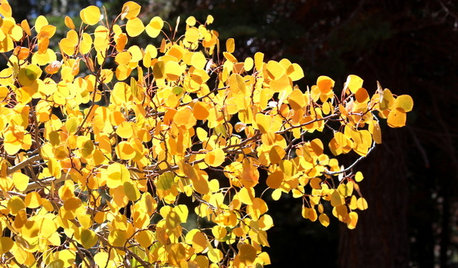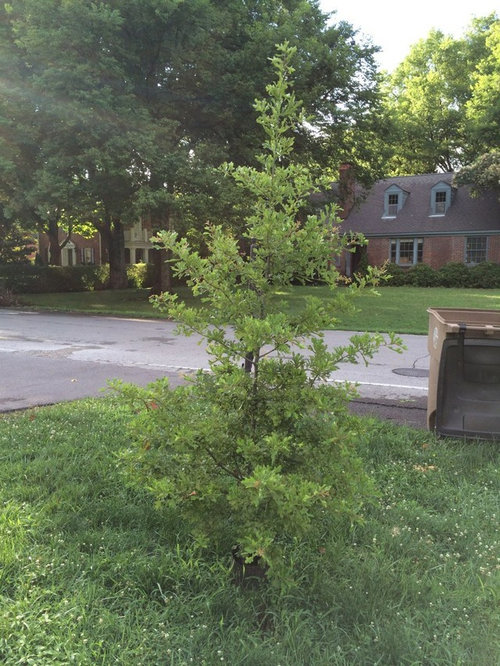Pruning - Raising Canopy Questions
John Wallace
9 years ago
Related Stories

GARDENING GUIDESHow to Prune Your Flowering Shrubs for the Best Blooms
Less is often more when it comes to properly pruning flowering shrubs. Here’s what to do and why
Full Story
FEEL-GOOD HOMEThe Question That Can Make You Love Your Home More
Change your relationship with your house for the better by focusing on the answer to something designers often ask
Full Story
GARDENING GUIDESShades of Vegetable Gardens: Growing Edibles in Less Sun
See how one gardener produces a veritable feast of vegetables and herbs under a canopy of shade
Full Story
EDIBLE GARDENSHow to Grow Your Own Peaches and Nectarines
Make gardening a little sweeter with these juicy fruits, which you can eat after plucking or preserve for later
Full Story
LANDSCAPE DESIGNGreat Design Plant: Quaking Aspen for 3-Season Beauty — on Its Own Turf
It offers bright fall foliage, snowy winter bark and lush green leaves in summer. Just don't try to plant quaking aspen away from its home
Full Story
GARDENING GUIDES5 Best-Behaved Trees to Grace a Patio
Big enough for shade but small enough for easy care, these amiable trees mind their manners in a modest outdoor space
Full Story
GARDENING GUIDESWe Bust 4 More Native Plant Myths
Have you been taken in by these fallacies about gardening with native plants?
Full Story
CONTAINER GARDENSContainer Garden Basics: How and When to Water Potted Plants
Confused about soil moisture, the best time to water and what watering device to use? This guide can help
Full Story
LANDSCAPE DESIGNPretty Trees for Patios, Paths and Other Tight Spots
Choose trees for their size, shape and rate of growth — or shape them to fit your space. Here's how to get started
Full Story
GARDENING GUIDESSpring Citrus Care Reaps Months of Sweet Rewards
Learn how to tend citrus trees in spring and ways to preserve their delicious fruit
Full StoryMore Discussions









John WallaceOriginal Author
John WallaceOriginal Author
Related Professionals
Norfolk Landscape Architects & Landscape Designers · Havre de Grace Landscape Architects & Landscape Designers · Amesbury Landscape Contractors · Caldwell Landscape Contractors · Fridley Landscape Contractors · Natick Landscape Contractors · Parkland Landscape Contractors · Riverview Landscape Contractors · Saint George Landscape Contractors · Annapolis Siding & Exteriors · Kennewick Siding & Exteriors · Waterville Siding & Exteriors · Ashland Decks, Patios & Outdoor Enclosures · Brooklyn Park Decks, Patios & Outdoor Enclosures · Pataskala Decks, Patios & Outdoor EnclosuresJohn WallaceOriginal Author
John WallaceOriginal Author
John WallaceOriginal Author
Huggorm
brandon7 TN_zone7
wisconsitom
hairmetal4ever
ken_adrian Adrian MI cold Z5
John WallaceOriginal Author
John WallaceOriginal Author
hairmetal4ever
brandon7 TN_zone7
RugbyHukr
John WallaceOriginal Author
hairmetal4ever
poaky1
John WallaceOriginal Author
blakrab Centex
gyr_falcon